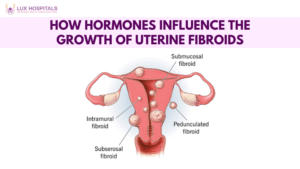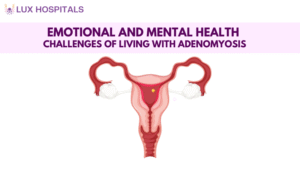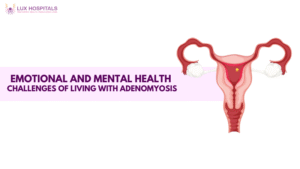Women and Rectal Bleeding: Key Health Concerns

The symptoms of rectal bleeding in women can vary from moderately worrisome to potentially dangerous. While female anatomy, hormones, and reproductive health specifically affect other causes, some causes of rectal bleeding in women may be similar to those in men. Comprehending the specific causes and concerns of rectal bleeding in women is crucial for early diagnosis and appropriate treatment.
What Is Rectal Bleeding?
The term “rectal bleeding” describes the flow of blood from the anus. It may be seen on toilet paper, stool, or the toilet bowl. The blood’s color bright red, dark maroon, or even black—can provide information about the bleeding’s location and cause.
Symptoms That Often Accompany Rectal Bleeding
Even though bleeding on its own can be alarming, it frequently has accompanying symptoms that aid in determining the underlying cause.
Common Accompanying Symptoms:
- Abdominal pain or cramping
- Changes in bowel habits
- Mucus in stool
- Pain during defecation
- Fatigue or dizziness (from blood loss)
In women, rectal bleeding may also be mistaken for vaginal bleeding, which can delay proper diagnosis.
Causes of Rectal Bleeding in Women
Rectal bleeding in women can occur for many of the same reasons as in males. However, other causes are exclusive to women, such as gynecological disorders, pregnancy, or hormonal changes.
1. Hemorrhoids
Swollen veins in the rectum or anus are called hemorrhoids. and are the most common cause of rectal bleeding in both sexes.
Women-Specific Triggers:
- Pregnancy: Increased pelvic pressure and constipation can worsen hemorrhoids.
- Childbirth: Straining during labor can cause or aggravate hemorrhoids.
Symptoms:
- Bright red blood on the toilet paper
- Itching, pain, or swelling around the anus
2. Anal Fissures
A little tear in the anus’s lining, known as an anal fissure, is frequently brought on by constipation or firm feces.
Why Women Are at Risk:
- Hormonal changes during menstruation may affect bowel regularity.
- Postpartum constipation can increase the risk of fissures.
Symptoms:
- Severe discomfort during or following a bowel movement
- Bright red bleeding on the stool or tissue
3. Colorectal Polyps or Cancer
Though not exclusive to women, colorectal cancer often goes undiagnosed in women due to the misattribution of symptoms.
Why It’s a Concern:
- Women may delay colonoscopies due to busy caregiving roles.
- Symptoms like fatigue, weight loss, or anemia may be overlooked.
Warning Signs:
- Dark or black stool (indicating upper GI bleeding)
- Unexplained weight loss
- Persistent changes in bowel habits
Early screening is essential—colon cancer is highly treatable when detected early.
4. Endometriosis Involving the Bowel
When uterine-like tissue proliferates outside the uterus, it is known as endometriosis. In rare cases, this tissue can attach to the rectum or bowel.
Unique Symptoms:
- Rectal bleeding during menstruation
- Cyclical rectal pain
- Painful bowel movements
This is a distinctly female cause of rectal bleeding that may be misdiagnosed if menstrual history isn’t considered.
5. Inflammatory Bowel Disease (IBD)
IBD includes ulcerative colitis and Crohn’s disease. Both of which can cause chronic inflammation of the gastrointestinal tract.
Gender-Specific Patterns:
- Hormonal fluctuations can impact symptom severity.
- Women with IBD may experience worsened symptoms during menstruation or pregnancy.
Symptoms:
- Chronic diarrhoea, often with blood
- Abdominal cramps
- Fatigue and weight loss
6. Rectal Prolapse
Women are more likely to experience rectal prolapse, which occurs when the rectum pulls through the anus.
Risk Factors:
- Several vaginal births
- Weakened muscles of the pelvic floor
- Constant constipation
Symptoms:
- Visible bulge through the anus
- Mucus and blood discharge
- Sensation of incomplete bowel evacuation
7. Gynecological Conditions Mimicking Rectal Bleeding
Some women mistake vaginal bleeding for rectal bleeding, which can be caused by menstrual bleeding, cervical polyps, or gynecologic cancers.
How to Differentiate:
- Track menstrual cycle timing
- Use separate hygiene products to identify the bleeding source
- A pelvic exam can help clarify the source of the bleeding
This confusion often delays the correct diagnosis, making awareness crucial.
Diagnosis of Rectal Bleeding in Women
- Rectal exam to check for haemorrhoids or fissures
- Colonoscopy to check the rectum and colon for polyps, cancer, or IBD
- Pelvic exam to rule out vaginal or gynaecological causes
- Imaging studies, like CT scans or MRIs, are used if internal complications are suspected
Treatment Options for Rectal Bleeding in Women
The course of treatment varies according to the underlying problem of rectal bleeding.
Conservative Treatments:
- High-fibre diet and stool softeners for constipation
- Warm sitz baths and topical creams for haemorrhoids and fissures
- Hormonal therapy or surgery for bowel endometriosis
Medical/Surgical Treatments:
- Anti-inflammatory medications for IBD
- Surgery for rectal prolapse or large polyps
- Chemotherapy or radiation for colorectal cancer
Early detection improves treatment success and reduces complications.
Prevention Tips of Rectal Bleeding in Women
- Eat a high-fiber diet and stay hydrated.
- Avoid straining during bowel movements.
- Stay physically active to improve bowel regularity.
- Practice good anal hygiene.
- Get regular screenings for colon health, especially after age 45.
When to See a Doctor?
While minor causes like hemorrhoids or fissures are typical, any persistent or unexplained rectal bleeding in women warrants medical evaluation.
Seek Immediate Medical Help If You Experience:
- Large amounts of blood in the stool
- Lightheadedness or fainting
- Black, tarry stools
- Abdominal pain with bleeding
- Bleeding accompanied by unexplained weight loss
Frequently Asked Questions
Hemorrhoids, anal fissures, or gastrointestinal conditions like inflammatory bowel disease can cause rectal bleeding in females. Unique female factors such as pregnancy, endometriosis, and rectal prolapse also contribute. In some cases, vaginal bleeding may be mistaken for rectal bleeding, so accurate diagnosis is essential.
A woman should be concerned about rectal bleeding if it is persistent, accompanied by pain, or associated with symptoms like weight loss or fatigue. Bright red blood that continues or dark, tarry stools may indicate a more serious condition. Immediate medical attention is recommended in such cases.
Menstruation itself doesn't cause rectal bleeding, but conditions like bowel endometriosis can lead to bleeding from the rectum during periods. This happens when endometrial tissue affects the bowel and bleeds cyclically. It can be mistaken for normal menstrual symptoms, so medical evaluation is needed.
Yes, pregnancy can lead to rectal bleeding, primarily due to hemorrhoids or constipation caused by hormonal changes and increased pressure on the rectum. Straining during bowel movements and reduced motility also contribute. Most cases resolve postpartum but may need symptom management.
Rectal bleeding is considered serious if it's heavy, frequent, or accompanied by other symptoms like severe pain, dizziness, or black stools. These signs may indicate internal bleeding or serious conditions like colorectal cancer or inflammatory bowel disease. Always consult a healthcare provider for persistent or unexplained bleeding.
Yes, rectal bleeding can be an early sign of colon cancer in both women and men. It may appear as blood in or on the stool, often accompanied by changes in bowel habits or fatigue. Early screening is key, especially for women over 45 or with a family history of colorectal cancer.




















